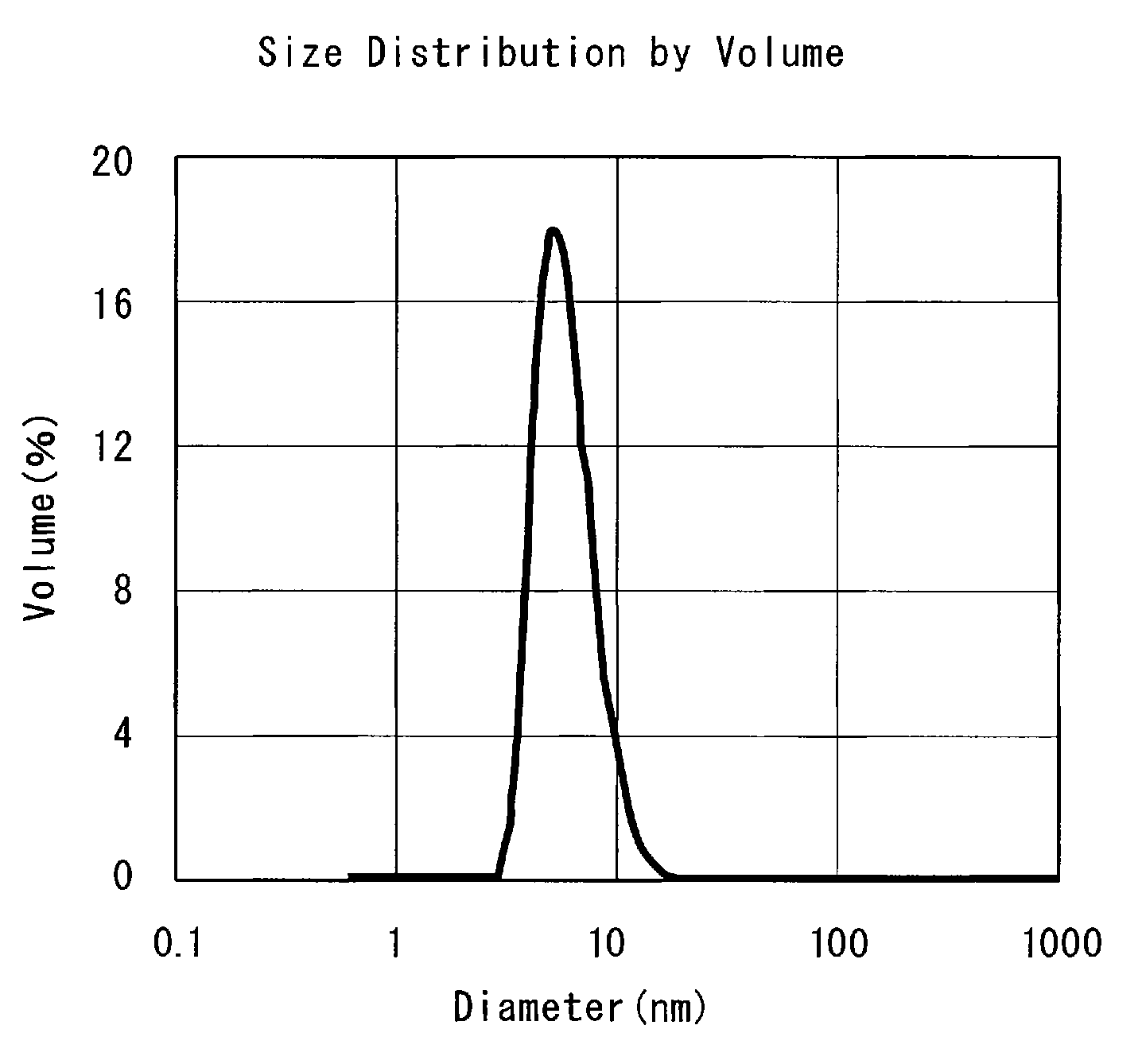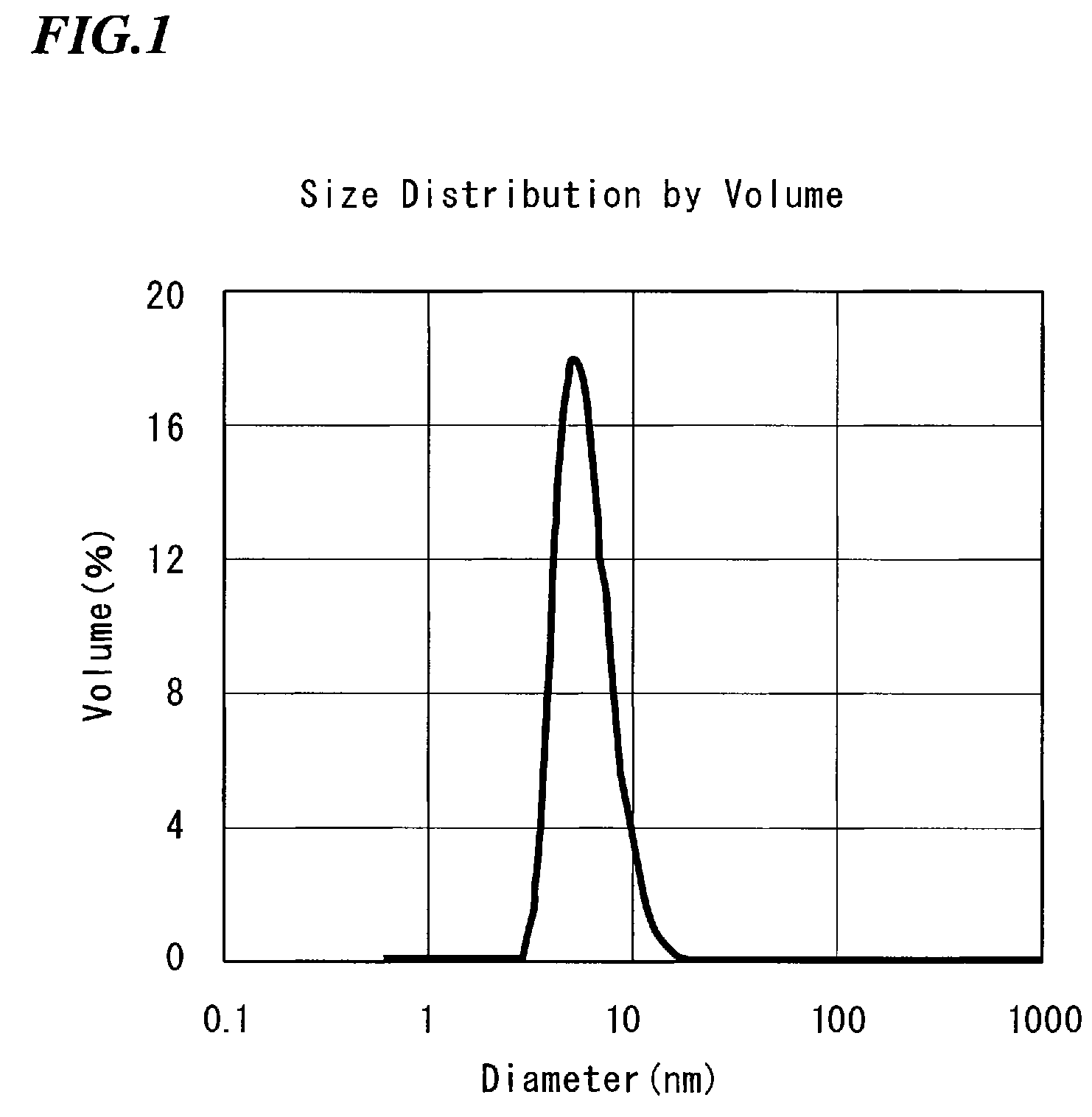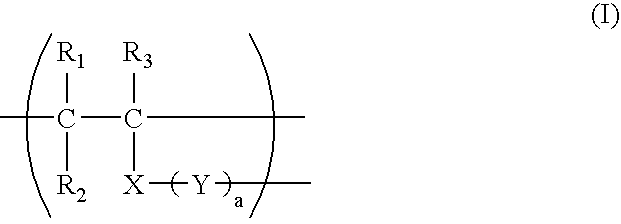Novel multi-branched polymer
a polymer and multi-branched technology, applied in the field of new multi-branched polymers and hyperbranched polymers, can solve the problems of not being able to achieve polymers with a high degree of dispersion, not being able to control molecular weight or dispersion degree easily, and achieving high degree of branching , the effect of easy modification
- Summary
- Abstract
- Description
- Claims
- Application Information
AI Technical Summary
Benefits of technology
Problems solved by technology
Method used
Image
Examples
synthesis example
(1) 3,5-bis(chloromethyl)styrene (BCMS) synthesis
[0114] Grignard solution was prepared from 13.4 g (54.7 mmol) of 3,5-bis(methoxymethyl)bromobenzene, 3.25 g (134 mmol) of magnesium, and 60 ml of tetrahydrofuran (hereinafter abbreviated as “THF”) in a reaction vessel of 200 ml. Subsequently, 30 ml (387 mmol) of dimethylformamide (DMF) was added dropwise into this solution at 0° C. and further agitated at room temperature for 3 hours after completion of the addition. Solvent was removed from the obtained reaction liquid by reduced pressure and 2N hydrochloric acid was added. The obtained reaction mixture was extracted 3 times with 50 ml of diethyl ether and the organic layer was collected and dried with anhydrous magnesium sulfate after rinsing with water. Residues obtained by the removal of solvent were purified by silica gel column chromatography to obtain 8.36 g (43.0 mmol) of the target 3,5-bis(methoxymethyl)benzaldehyde as a viscous liquid. Yield was 79%.
[0115] Then 30 ml of T...
example 1
(3) Synthesis of Multi-Branched Polymer I
[0119] In a reaction vessel of 100 ml, 2.88 g (11.3 mmol) of 3,5-bis(chloromethyl)styrene obtained in (1) described above, 0.336 g (3.40 mmol) of cuprous chloride, 1.06 g (6.80 mmol) of bipyridyl, and 12 ml of chlorobenzene were added, and after mixing to homogeneity, the inside was degassed using a water jet aspirator. The reaction vessel was sealed after the reaction system was replaced with nitrogen and agitated for 90 minutes in an oil bath set to 115° C. in advance. Then approximately 20 ml of THF was added to the reaction mixture and agitated for about 30 minutes in air at room temperature. The obtained mixture was purified by alumina column and by reprecipitating with methanol, 1.04 g of multi-branched polymer 1 was obtained as a yellow viscous matter. The weight average molecular weight of this obtained matter was Mw=3958 (Mw / Mn=1.74) as a result of measurement by a gel permeation chromatography method (hereinafter abbreviated as “G...
example 2
(5) Synthesis of Multi-Branched Polymer 2
[0125] In a reaction vessel of 100 ml, 2.10 g (4.58 mmol) of the monomer obtained in (2) described above, 0.197 g (1.37 mmol) of cuprous bromide, 0.43 g (2.75 mmol) of bipyridyl, and 7.9 g of chlorobenzene were added, and after mixing to homogeneity, the inside was degassed using a water jet aspirator. The reaction vessel was sealed after the reaction system was replaced with nitrogen and agitated for 90 minutes in an oil bath set to 110° C. in advance. The obtained mixture was purified by silica gel column chromatography using tetrahydrofuran (THF) solvent and the concentrated solution was reprecipitated twice with hexane. 0.68 g (yield 32%) of multi-branched polymer 2 was obtained as a colorless transparent viscous compound. The weight average molecular weight of this compound was Mw=9640 (Mw / Mn=1. 18) as a result of measurement by the “GPC method” when converted to polystyrene, and Mw=5144 (Mw / Mn=1.16) by the “MALS method”.
PUM
| Property | Measurement | Unit |
|---|---|---|
| temperature | aaaaa | aaaaa |
| temperature | aaaaa | aaaaa |
| temperature | aaaaa | aaaaa |
Abstract
Description
Claims
Application Information
 Login to View More
Login to View More - R&D
- Intellectual Property
- Life Sciences
- Materials
- Tech Scout
- Unparalleled Data Quality
- Higher Quality Content
- 60% Fewer Hallucinations
Browse by: Latest US Patents, China's latest patents, Technical Efficacy Thesaurus, Application Domain, Technology Topic, Popular Technical Reports.
© 2025 PatSnap. All rights reserved.Legal|Privacy policy|Modern Slavery Act Transparency Statement|Sitemap|About US| Contact US: help@patsnap.com



